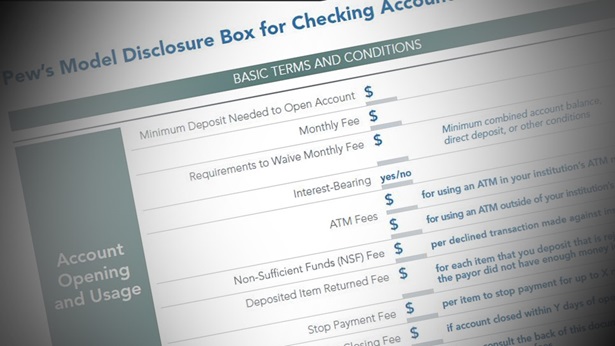Pew's consumer banking project studied the accounts that Americans rely on every day to manage their finances, including checking accounts, prepaid cards, and mobile payments.
The initiative built partnerships with key stakeholders to advocate for effective consumer protections and a level playing field in the financial marketplace.


Data Visualization
June 24, 2015
Who Reads 40 Pages of Disclosures?
The need for a disclosure box









